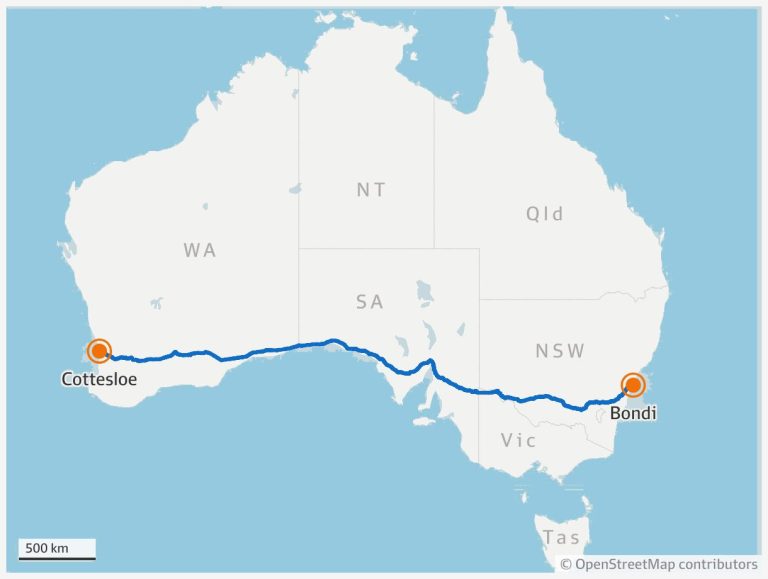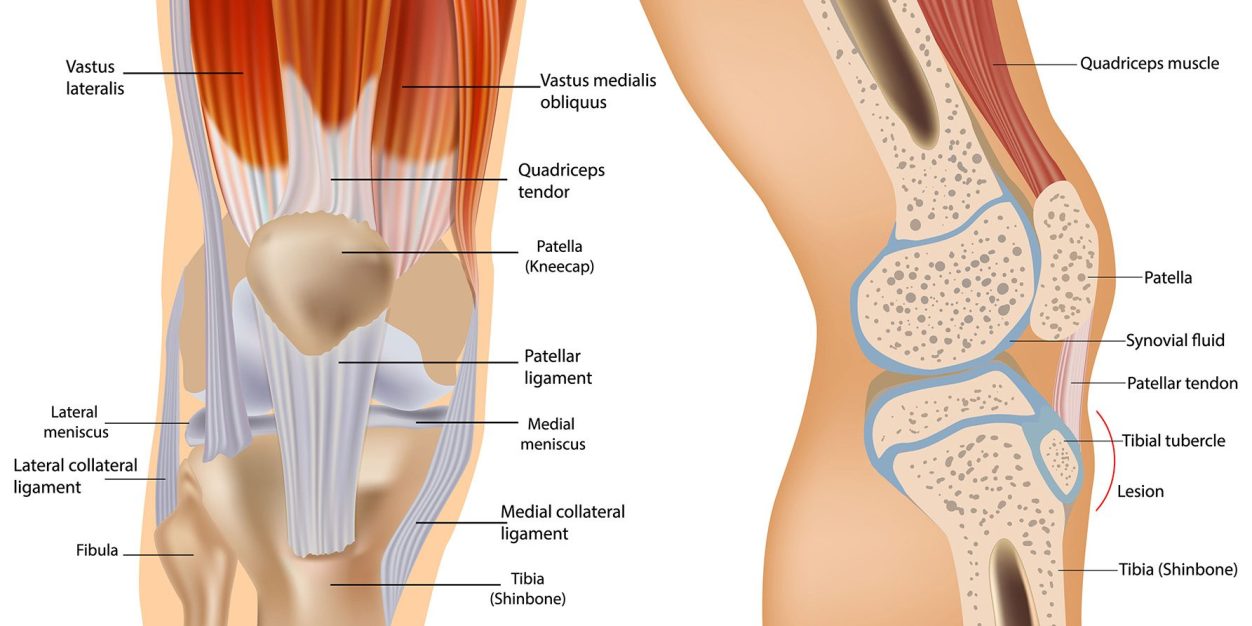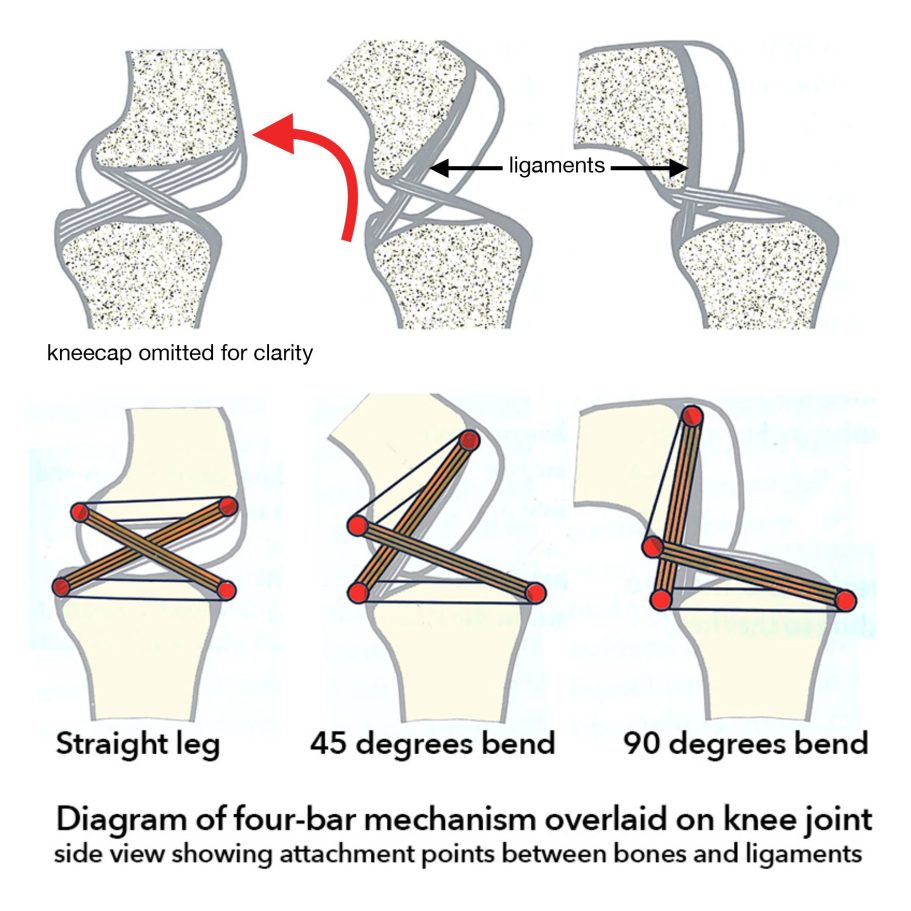20
On your knees

Peterschreiber.media/istock
"Ironically, the knees have felt OK. They've been very solid".
So said British runner William Goodge on Bondi Beach, Australia, on 19 May this year.
He had just broken the record for running 3,800 km across the continent, from Cottesloe Beach on the west coast to Bondi in the east, in 35 days – more than 100 km or the equivalent of 2 1/2 marathons each day.
Just when you thought he would be 'on his knees', he said his knees were perfectly OK – it was his feet he was worried about!

The amount of work his knees went through in that time is difficult to believe. The experts seem to agree that each stride a runner takes exerts a force on the ground of about four times their body weight. So for a 75 kg. athlete, each heel strike exerts a force of 300kg. Over the course of a kilometer (say 1000 strides) that adds up to about 300 (metric) tons of pressure. Goodge emphasised that he runs very slowly, which tends to increase these load figures due to the shorter stride at slow speeds.
So it's not surprising that the knee joint needs to be the largest and strongest in the human body, and is joined to the strongest bone in the body, the thigh bone or femur.
There's nothing primitive or experimental about the knee. Is a creator/designer at work, or has evolution produced another miracle of unintelligent 'design' ?

This picture shows a section through the knee, parallel with the front of the knee. You can see the upper bone (femur) and the lower bone (tibia) mesh together well, apart from a large cavity in the centre of the femur. This accommodates two important ligaments which control how the joint behaves. Strong and flexible, these are the cruciate ligaments, called that because they cross over each other (from the Latin crux for a cross). The ends of each ligament are anchored to the bones at each end, one in front of the other (anterior = front and posteria = back).
The knee in action
When the knee joint moves, it combines rotation and sliding at the same time. It also allows for a certain amount of twisting between the femur and tibia, important in coping with rough terrain. This is not the sort of simple hinge joint that we come across in everyday life. It is known to engineers as a 'four-bar mechanism'. These diagrams show in a simple way what happens.
Stuart Burgess (see Reference) comments:
" The knee joint is a particularly sophisticated kind of four-bar mechanism because the cruciate ligaments are kept taut by the rolling action of the bones..."
Evolution requires the knee joint to have evolved in tiny increments, one part at a time, by accident and without any concept of the final target. But it requires a minimum of four components perfectly matched together and a range of at least 16 essential features for the joint to work. Change one and the joint fails.
The precise attachment points for the ligaments are critical. Note that we have no idea as yet how DNA specifies exact geometric locations, nor how the development of this joint is controlled in the foetus within the first 12 weeks of conception. Different materials, rigid bones and flexible ligaments, cartilage and muscles, all come together in precise anatomical detail, surrounded for protection and stability by a sheath of ligaments, muscles and tendons, and lubricated by a special fluid, the synovial fluid.

Sakurra/istock
Upright posture
The human knee is distinctly different from the knees of monkeys or apes. It is designed to lock conveniently in the standing position, so that maintaining a vertical posture is easy and humans are able to stand, walk and run upright in a completely natural way. Apes can only stand upright with awkward bends at the ankle, knee and hip joints and so can only stay upright for short periods. In his book Stuart Burgess lists at least ten different features of the human anatomy which make this upright posture possible (see Reference Page 165).
We are a unique creation by God, designed not merely to stand upright but to communicate, to love and to worship and to act as stewards for all creation.
We are not an improved, souped-up version of an ape!

Day One Publications
When knees go wrong
Our experience of sophisticated machinery is that there is plenty to go wrong. The knees are no different – but there is a reason for that.
The Bible's account of Creation in Genesis describes how God, at the conclusion of his work, surveyed what he had done and pronounced it 'very good'. That is just what we would expect from an all-wise and all-powerful creator. Everything was working as He intended.
That is not the world we live in today.
The book of Genesis records how mankind misused his freedom to rebel and reject God's love and the glory that God had prepared for him. Sin and disease and decay entered a world blighted by God's displeasure. Our limbs became subject to arthritis, to osteoporosis and a multitude of debilitating and ultimately fatal complaints.
The gospel message is that this world is temporary.
It is due to be replaced.
God has provided through his Son a way of escape from sin and all its devastating effects on our world, a way for us to flourish in the way He intended in the beginning. The diseased limbs will be restored and all humankind will recognise and pay homage to Him.
"Strengthen the feeble hands, steady the knees that give way;...Then will the lame leap like a deer, and the tongue of the dumb shout for joy." Isaiah 35:3, 6
REFERENCE: 'Hallmarks of design – Evidence of purposeful design and beauty in nature' – Stuart Burgess
Day One Publications 2008
"Unto me every knee shall bow, every tongue shall confess to God." Romans 14:11 – the Apostle Paul quoting Isaiah 45:23

Day One Publications
"God made man upright..."
Ecclesiastes 7.29
